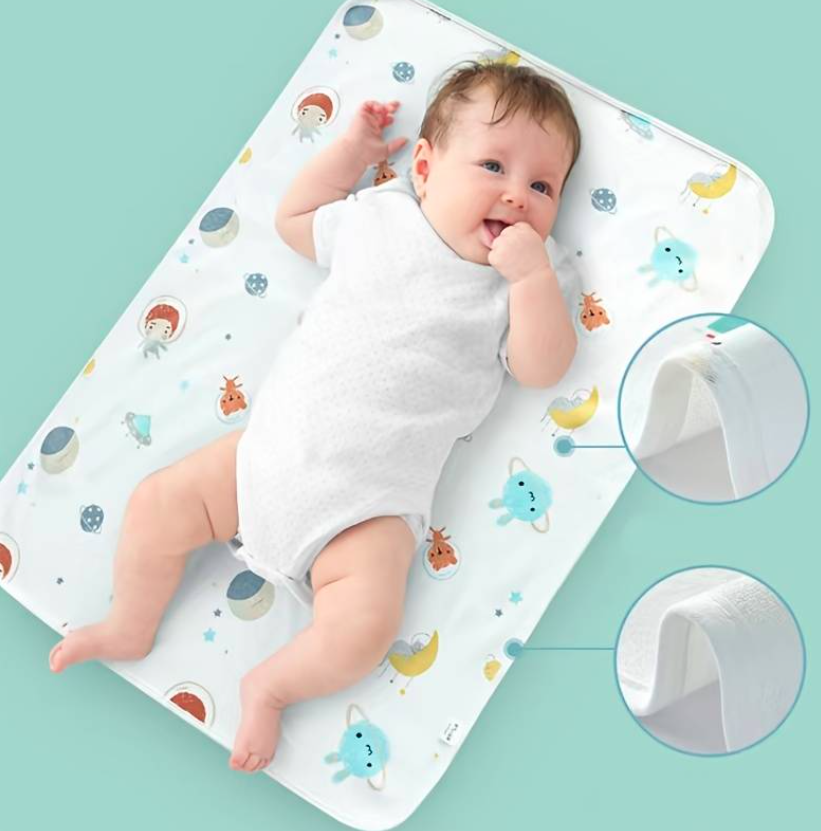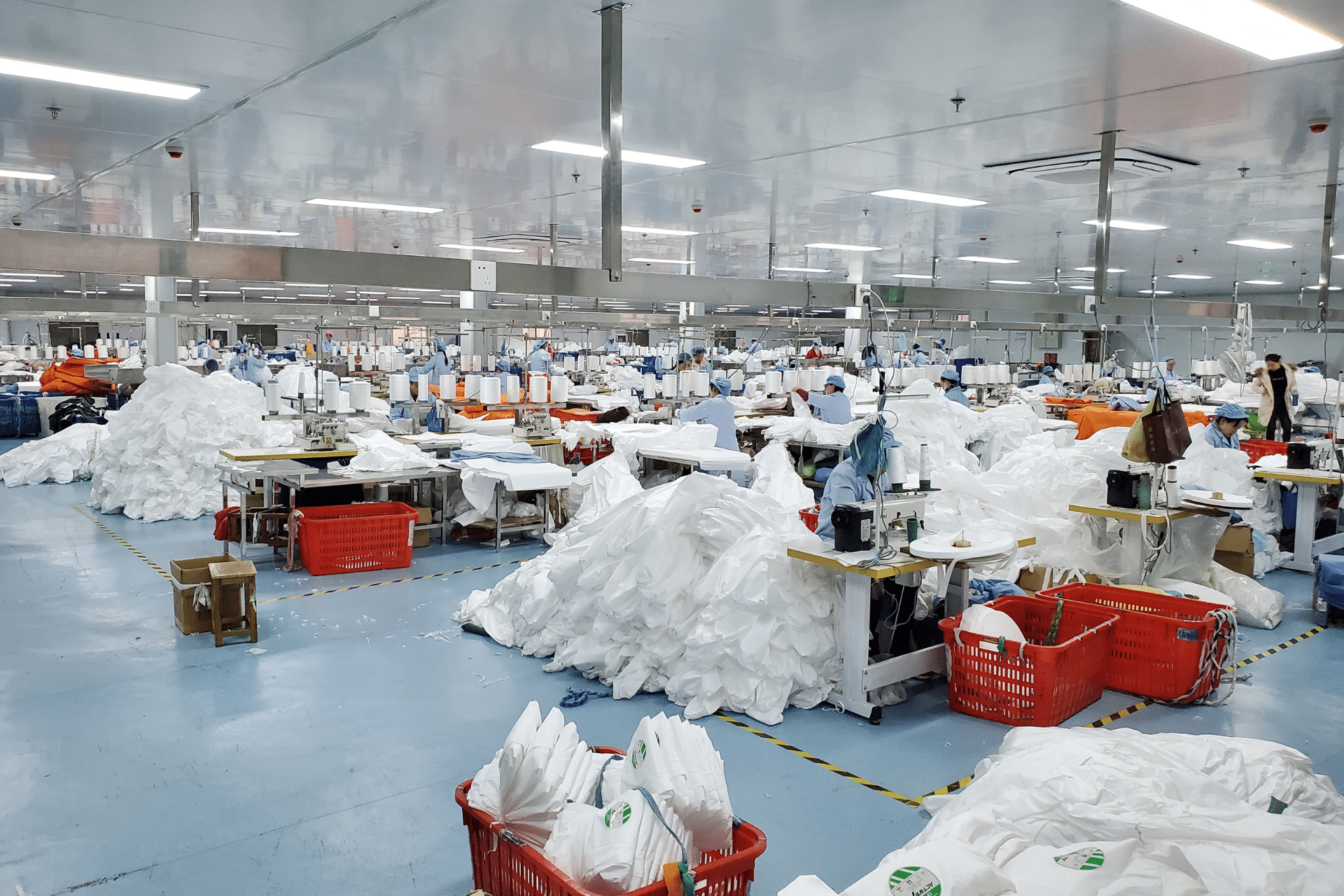Introduction
When it comes to patient care, every detail counts, especially those that safeguard health and comfort. Hospital bed chuck pads play a pivotal role in this arena, providing a critical layer of protection and peace of mind for both patients and caregivers. These disposable bed pads, essential for managing incontinence and preventing spills from reaching expensive mattresses, come in various forms, including disposable and washable options. But how do you choose the right pads, and what are the best practices for their use? This guide will delve into these questions, offering insights into maximizing the benefits of disposable bed pads in a healthcare setting.

Understanding Hospital Bed Chuck Pads
The Basics of Hospital Bed Chuck Pads
Hospital bed chuck pads, often simply called “chucks” or “bed pads,” are designed to absorb liquids and protect bedding from moisture and staining. They are a key component in incontinence care plans, not only for patients with mobility issues but also for anyone needing extra protection to keep bedding dry and hygienic.

Types of Bed Pads
Disposable Bed Pads
Disposable bed pads are convenient and hygienic, offering a one-use solution that can be thrown away after it becomes soiled. These pads are typically equipped with a waterproof backing and are available in various sizes and absorbency levels to meet different needs.

Washable Bed Pads
Reusable bed pads are an environmentally friendly and cost-effective alternative to disposable options. Made from durable materials, they can be washed and reused multiple times, making them ideal for long-term incontinence management.
This structure sets the foundation for a comprehensive article, guiding the reader through understanding, selecting, and utilizing bed pads effectively. Remember, engaging content balances detailed information with an accessible, conversational tone, encouraging readers to implement best practices in their care routines.

The Role of disposable Bed Pads in Patient Care
Incontinence Management
Managing incontinence effectively is paramount in healthcare settings to maintain patient dignity and comfort. Hospital bed chuck pads are specifically designed to absorb urine, preventing moisture from reaching the mattress or the patient’s skin. This not only helps keep the patient dry and comfortable but also reduces the risk of skin irritations and infections.

Protecting Bedding and Mattresses
Beyond incontinence management, disposable bed pads serve the broader purpose of protecting bedding and mattresses from various fluids, including blood and other bodily fluids. A waterproof mattress protector can extend the life of hospital beds, saving healthcare facilities considerable resources over time by safeguarding against stains and damage.
Selecting the Right Bed Pad
Considering Absorbency Levels
The absorbency level is a critical factor when choosing incontinence bed pads. For light incontinence, a pad with moderate absorbency may suffice, whereas severe incontinence may require a heavy absorbent underpad. Selecting the right absorbency level ensures effective moisture management, keeping patients dry through the night.

Sizing and Fit
Choosing the right size and fit of the bed pad is essential to ensure complete coverage of the area most likely to be soiled. Sizes vary, with some disposable incontinence underpads designed to cover the entire mattress and others intended to protect specific areas. A properly sized bed pad will prevent leaks and minimize the need for frequent bedding changes.

Best Practices for Using Bed Pads
Placement Techniques
Effective placement of bed pads can significantly enhance their utility. For patients who are mobile, positioning the bed pad under the hips can offer optimal protection. For those with limited mobility, ensuring the bed pad covers areas at risk of leaks is crucial. Proper placement not only maximizes absorbency but also ensures comfort for the patient.
Maintenance and Hygiene
For disposable pads, prompt disposal and replacement after soiling are crucial to maintaining hygiene. Washable pads should be cleaned according to manufacturer instructions to ensure they remain effective and hygienic for repeated use. Regularly changing and properly maintaining hospital bed incontinence pads are fundamental to preventing infections and ensuring a clean environment.

The Benefits of Using High-Quality Bed Pads
Enhanced Comfort and Skin Protection
High-quality disposable underpads not only offer superior absorbency but also feature a soft upper layer that keeps the skin dry and reduces the risk of irritation. Advanced materials and designs can also improve air circulation, further enhancing skin health and comfort for patients.
Odor Control and Moisture Management
Quality absorbent pads are designed with odor control technology and materials that lock away moisture, preventing unpleasant smells and maintaining a hygienic environment. This is particularly important in healthcare settings, where cleanliness and comfort are paramount.

Innovative Features in Modern Bed Pads
Waterproof Backing
Modern bed pads come with a waterproof backing that ensures liquids do not seep through to the mattress. This feature is crucial for protecting bedding and furniture from damage and contamination.
Adhesive Strips
Some bed pads include adhesive strips that secure the pad in place, preventing it from shifting during use. This is especially beneficial for patients who move frequently in their sleep, ensuring consistent protection throughout the night.

The Role of Bed Pads in Patient Care
Managing incontinence and protecting bedding are paramount in healthcare settings. Bed pads serve a dual function: they offer comfort to patients while safeguarding mattresses and sheets from moisture damage.
Incontinence Management
Incontinence can be a challenging issue for patients, impacting their comfort, hygiene, and overall well-being. Heavy absorbent underpads, specifically designed for incontinence care, play a crucial role in absorbing leaks and preventing moisture from reaching the bedding or mattress. This not only helps in keeping the patient’s skin dry but also contributes significantly to their dignity and quality of life.

Protecting Bedding and Mattresses
Mattresses and bedding in healthcare settings are significant investments, and protecting them from stains and damage is essential for hygiene and cost-efficiency. High-quality bed pads act as a barrier against spills and leaks, extending the life of the bedding and mattresses and ensuring a clean and hygienic environment for every patient.
Selecting the Right Bed Pads
Choosing the correct type of bed pad is crucial for effective incontinence management and bedding protection. The selection process involves considering several factors, including absorbency, size, and whether disposable or washable pads are more suitable for the patient’s needs.
Considering Absorbency Levels
Absorbency is perhaps the most critical factor when selecting bed pads. For light incontinence, a pad with moderate absorbency might suffice. However, for severe incontinence or overnight use, choosing a pad with maximum absorbency is advisable to ensure comfort and protection throughout the night.

Conclusion
Hospital bed chuck pads play an indispensable role in enhancing patient safety and comfort through effective incontinence management and protection of bedding. By selecting the right type, size, and absorbency level of bed pads and adhering to best practices for their use, healthcare providers can significantly improve the care environment. High-quality, well-designed bed pads with innovative features such as waterproof backing and adhesive strips can offer added benefits, including enhanced comfort, odor control, and moisture management. Whether disposable or washable, the careful selection and maintenance of bed pads contribute to a cleaner, more comfortable, and dignified patient experience.
FAQs
- How often should disposable bed pads be changed?
- Disposable bed pads should be changed as soon as they are soiled to maintain hygiene and comfort for the patient.
- Can washable bed pads be used for patients with severe incontinence?
- Yes, washable bed pads designed for heavy absorbency are suitable for patients with severe incontinence, providing an effective and eco-friendly solution.
- How can I prevent bed pads from shifting at night?
- Look for bed pads with adhesive strips or consider fitted sheet-style pads that offer a snug fit over the mattress to prevent shifting.
- Are bed pads only suitable for hospital use?
- No, bed pads can be used in various settings, including home care, to protect bedding and furniture from incontinence, spills, and stains.










